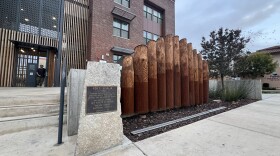In many ways the Central Valley we know today was born in the 1870s. The decade gave us irrigation canals, the railroad, and the emergence of cities like Fresno and Bakersfield. But an often overlooked law from that decade had an equally large impact, helping to fuel explosive growth of the agriculture industry that still drives our economy. Today on KVPR's Central Valley Roots - the “No Fence” law of 1874.
Even before the Gold Rush, ranching ruled supreme in California. Ranchers moved large herds of cattle and sheep freely across the state, grazing wherever there was food. And the law favored ranchers over farmers. The Trespass Act of 1850 required farmers to build a “lawful fence” around their crops, if they wanted protection from grazing livestock. Back in the days before barbed wire, building a fence was prohibitively expensive.
But things soon began to change. Farming became more widespread, and farmers developed more political clout in Sacramento. In 1874, the Legislature passed the “No Fence” law. It shifted the liability burden from farmers to ranchers. Farmers no longer had to fence their fields, and could recover damages for crops destroyed by grazing livestock.
As a result, ranchers began using a new invention, barbed wire, to fence in their herds. The "No Fence" law helped set off an agricultural boom. Soon wheat barons replaced cattle barons, followed shortly by other crops like raisins, cotton, and stone fruit, setting the stage for the Valley we know today.







